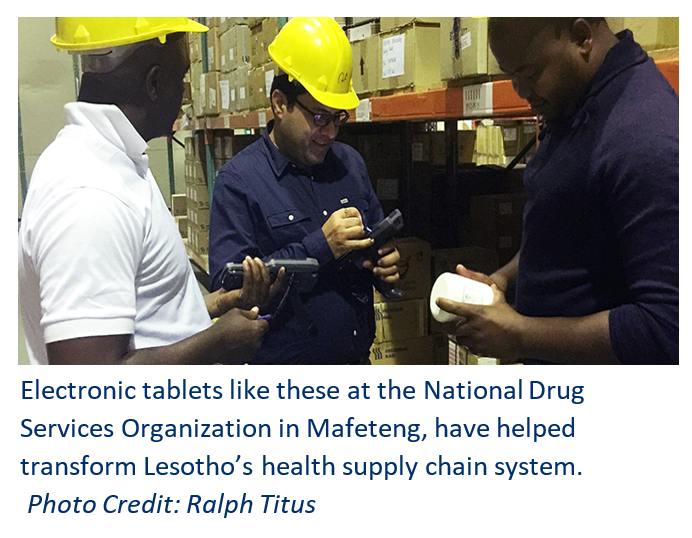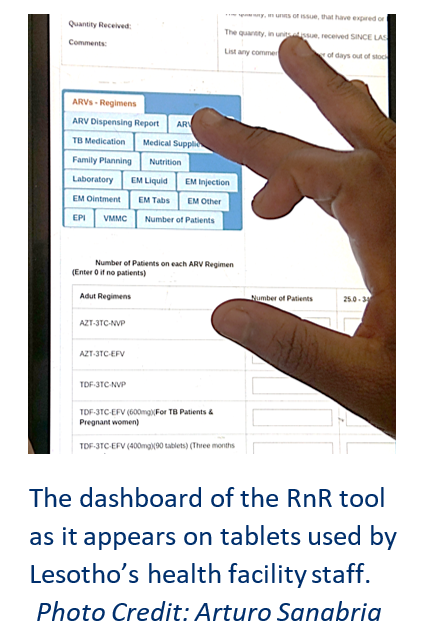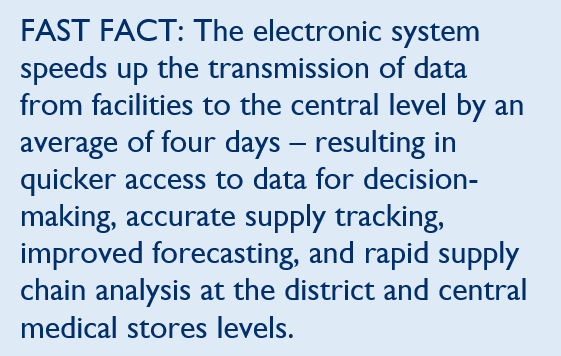The USAID Global Health Supply Chain Program-Procurement and Supply Management (GHSC-PSM) project supports local partners to strengthen the country’s health commodity supply chain. In collaboration with the Ministry of Health and Columbia University’s ICAP, the project is expanding electronic data collection and helping build an increasingly optimized health commodity supply chain, including commodity forecasting, inventory management, and planning and distribution.
One of the program’s most impactful activities has been the expansion of the reporting and requesting (RnR) or “informed push” tool nationwide, which uses electronic data to manage Lesotho’s health commodity supply chain. With this automated system, health facility staff use electronic tablets to upload information about current stock levels, expiry dates, quantity expired or damaged, and quantities received from the central warehouse. These data points from health facilities inform resupply quantities from the central level that are pushed to facilities. In addition, district logistics officers (DLOs) use the data to identify supply risks and help facilitate stock transfers between health facilities and districts.





